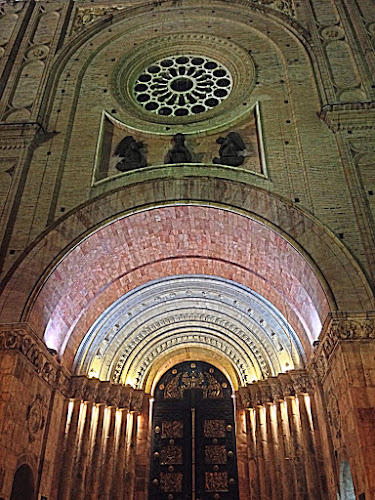For those in the know: Cuenca ~
 |
| All that's missing is a chalked outline and a grumpy detective |
The new, the different, the oddity, all are easy to spot.
The lady crouched on the step stitching a belt? her ancient, knurled fingers producing the intricate, detailed repetitive pattern. The tableaux of effigies awaiting incineration on old years night, that days later still leave an ash shadow. A story that, had I not witnessed its beginning, I would not have recognised, nor even noted. No, it's the sudden appearance of a minor vignette that serves to depict an absence.
Wandering past the law court and its attendant lawyer offices, I spot a pinstriped lady shading her head with a large envelope. An absence: head shading is a common occurrence, given the proximity of the sun, yet nobody wears a hat. The indigenous will triple fold a shawl to create a neat symmetry to their traditional attire, others simply drape a t-shirt over their heads. Neither are suitable solutions for her. But that wasn't what caught my attention; it was the general lack of ochre A3 envelopes, coupled with the want of shops selling ink-pads and rubber stamps. The scarcity of men with manual typewriters, shade-sheltering under spreading trees and roof eaves in the close proximity to every government office. That envelope is the Peruvian badge of profession. The scribe, the 'franker' and the typed, triplicated form, the essential product for their bureaucracy.
It's early evening and we're walking along under the arched porticoes that surround the plaza, stepping around the stuffed black garbage bags stacked against the stone pillars, there awaiting their nightly collection. Not one single bag has been shredded. Not one sack is spewing its entrails. It's only then that I realise another absence. There's simply no dogs in the centre of this city. And as a consequence the streets are litter free, probably the cleanest city we've visited.
Next morning we wander downhill, no particular destination in mind, happy to let serendipity be our provider.
An effluent-free city centre river, giant water-worn granite boulders and manicured grass, arched footbridges rendered in burnished steel. An exaggerated extravaganza of the classic water feature, one that, all too often is stranded in a suburban back garden. I almost expect to find a fishing gnome around the next bend. Only it's a chainsaw carver who's creating tactile seating in a newly created park. Another absence. One that serves to emphasise the preponderance of M. Eiffel (et al.) and their cast-iron foundries, that totally dominate all of South America's street and plaza furniture.
This city is drawing us in.
 |
| A montage of embroidered belts |
Yet the most surreal 'absence of consequence' comes that evening. Our wanderings had sourced the location of the 'exotic' eateries. A street of ethnic food set within the confines of Ecuadorean cuisine. A restaurant that claims to be using Pakistani spices, that's called 'The Taj Mahal' that's serving doner kebabs. A fusion that probably should have served as a warning. We order and are asked if we want our Bombay aloo with or without 'picante'? I'm in a South Asian eatery; since when was there a choice of 'bland spice' or 'slightly bland spice'? For that's exactly how it arrived. An absence that serves to re-emphasise how un-challenged our taste buds have been for the last considerable time.






































